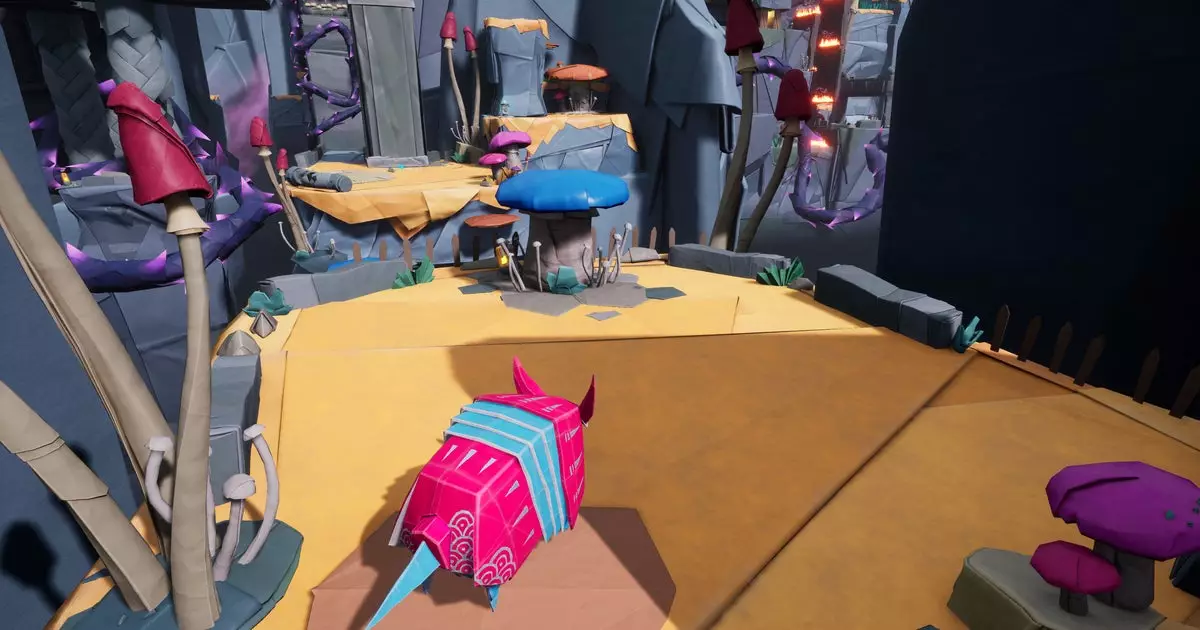At first glance, the premise of Hirogami, a 3D action platformer centered around origami, evokes a sense of conflicting philosophies. The game itself uses digital technology to celebrate the delicate and intricate art of paper folding. This irony raises questions about the medium’s sincerity when it intertwines the preservation of traditional art with a narrative set against a backdrop of digital battles against robotic adversaries. The inherent contradiction of glorifying paper art while existing solely within the realm of digital gaming creates a complex layer of commentary that merits dissection. Rather than merely presenting Hirogami as a nostalgic homage, one might view it as a critique of our relationship with digital media—ostensibly promoting the tactile while being fundamentally untouchable.
In a world where Hiro, the protagonist, is represented as a valiant sheet of paper, one cannot help but appreciate the clever design choices that allow him to morph into various forms, such as a ground-pounding frog or a block-pulling ape. This dynamic attribute of transformation not only expands gameplay possibilities but invites players to engage with a narrative rooted in overcoming a supposed ‘blight’—a symbolic representation of irrevocable loss. Yet, as players navigate through this origami landscape, one might ponder whether Hiro remains a mere figment of nostalgia disconnected from his original essence as a piece of parchment. The game challenges players to cleanse a tarnished world while evoking a reminiscent affinity for the physical forms of art that, ironically, they can no longer hold. This contrast builds a reflective landscape that questions the very nature of memory and artistic representation.
Hirogami directs players to explore a richly crafted environment filled with intricate details emblematic of fragile paper art. The advertised mechanics that allow players to “unfold into a sheet of paper to ride fiery updrafts” and “become a paper plane to traverse dangerous chasms” expertly manipulate the gameplay to enhance the theme of delicacy. However, there exists a notable absence of an exploration mechanic that pays tribute to the craft of origami itself. Players could have been engaged in an interactive mini-game where they must replicate traditional folds and patterns to unlock transformations. By neglecting this opportunity, Hirogami ironically downplays the very art form it seeks to exalt, leading to a missed chance for deeper immersion into the lore behind these transformations.
The visual design might be rooted in an “old hat” concept of games made from paper, yet the artistic direction in Hirogami captivates rather than repels. Its lush aesthetics juxtaposed with a traditional instrumental soundtrack creates an overall enchanting experience that transports players to a delicate universe. Nevertheless, the aesthetic choices may also serve as a surface-level effort, disguising deeper philosophical implications that could have been explored more vigorously. The game touches on nostalgia, yet it risks falling into a trap of superficial sentimentality without engaging players in the broader implications of the decline of print art as it finds itself overshadowed by digital expansion.
As Hirogami is slated for release in 2025, one is left to introspect whether this digital homage can successfully navigate the complexities of art forms it aims to honor. With digital gaming having overshadowed traditional forms like printed media, is there still room for a renaissance that encompasses both worlds? The reflections raised by Hirogami open up discussions about the current state of art and representational technology, begging the essential question: can the intrinsic qualities of paper folding be effectively honored in a digital medium? As players prepare to engage with Hiro’s journey, perhaps the underlying message is a call for renewal—a plea for a synthesis instead of dichotomy, urging society to recognize and preserve the nuances of both digital and physical art forms before they too fall under the impending threat of obsolescence.

